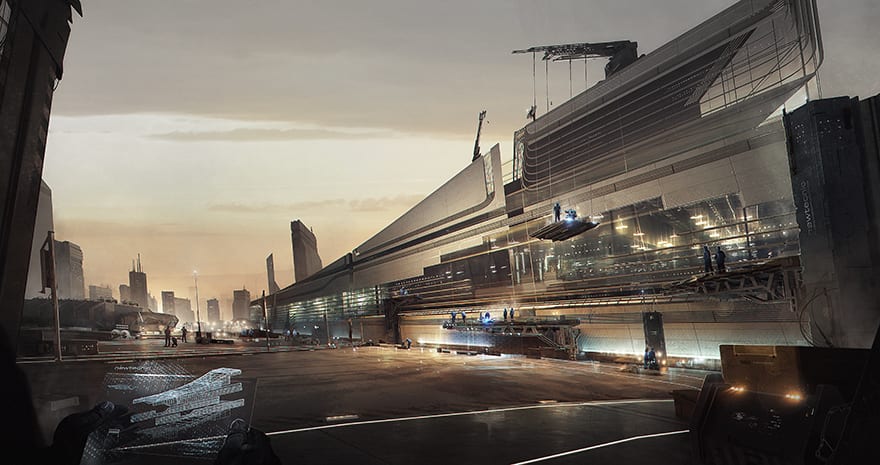Building design pattern books that have been out of favour for decades are now finding a new digital life that is disrupting the global construction industry. Andrew Watts, CEO of building design engineer, Newtecnic, discusses the trend for digitalisation.
In the past, construction pattern books that allow designers to develop and popularise building styles, were widely used to let clients see what they were buying. With easy-to-understand images, customers could request changes to layouts and finishes to get a “mass customised” building to suit their needs.
The great advantage of pattern books was that the designs were tried and tested – known to work. There were no surprises, and each stakeholder understood exactly what the outcome would be. Mixing and matching details was simply achieved.
Pattern books fell out of favour especially with architects who saw them as uncreative and limiting their design options. Digitalisation, however, has changed pattern books, updating the concept and positively disrupting the processes of designing, engineering, constructing and maintaining 21st century buildings.
Generative design changes everything
One of the main drivers for this radical change in construction has been the evolution of generative design (GD) technology. This automatically and semi-autonomously creates designs based on the physics related to the functions of buildings. This process of form finding often copies nature’s solutions by developing organic shapes that would not be possible without the use of the algorithms that drive designs. These develop through many iterations and output designs that are optimised for their functions.

Integrated workflows are achievable when projects are fully engineered in advance of any physical construction. Too often decisions are made using only partial information, which means that decisions are taken on unreliable information that does not reveal the complete picture.– Andrew Watts, Newtecnic
This means that a digitalised pattern book can have almost infinite design variations and like its historical counterpart each option has assured and verified characteristics that make it perfectly suited to its function.
Designs generated by algorithms turn engineering requirements into unique and often very beautiful designs that have never been seen before. Each time changes are required, the design regenerates around the engineering inputs to produce technically warranted outcomes.
Algorithms ensure that mechanical electrical and plumbing components and systems along with all other aspects of the building are automatically reconfigured and optimised. This is achieved parametrically so that, for example, air-conditioning ducts, pipes or cable runs are automatically redrawn to fit the modified structural specification.
Optimised everything
One of GD’s enabling technologies is topology optimisation (TO). This optimises designs within a space envelope and to a set of boundary conditions including: geophysical parameters, stress, lighting, heating and ventilating, human usage and traffic flows.
Topology optimisation is a not a new technology but with the evolution of 3D design simulation, and recent advances in 3D printing hardware, it has helped make GD practical for many manufacturing and construction applications. In the past TO on its own could create optimised shapes for components and assemblies, but often it was not possible to turn these designs into real-world geometry. In other words, while the digital output may have been theoretically perfect it was not possible to produce it as a physical product.
GD has changed that situation because it automatically creates 3D computer aided design (CAD) geometry from the outputs that TO generates. This is a game changer because now it is possible to know that optimised design outputs from GD are practical to manufacture. This advance allows designers to not only digitally modify designs using CAD, but also to check that any modifications still fall within the required condition boundaries.
These technologies change not just the designing and making process but how people think. Instead of being restricted to “design”, “engineering” or “manufacturing” GD is helping skilled people break out of their departmental silos.
Role changes
Because this technology automatically generates optimised and fully proven designs the role of the architect has changed. Masterplans and programs are increasingly integrated with zoning, social and engineering design aspects of the project.
In many instances the productivity enhancement and efficiency that this technology offers meets a bottleneck at the early design stage. But, using the digital tools that are now available, building designs are increasingly being generated and optimised using this method.
The implications not just on productivity but also on costs are profound because many more final design options can be quickly generated and validated by design engineers without the need for architectural input.
To handle this engineering-led building design process, Newtecnic is working with several universities in the US to educate a fresh generation of engineers who can work with the newest technologies, and design and construction processes. Working alongside more experienced engineers they can analyse and verify individual components, fabrications and whole buildings that are based on the firm foundation of physics.
The technology ensures that while the visual style reflects today’s most advanced aesthetic, the engineering design is guaranteed to optimally perform its functions.
Building the future
This way of operating solves two significant problems encountered on many construction projects, namely: interrupted and fragmented workflows; and a shortage of skilled workers.
Integrated workflows are achievable when projects are fully engineered in advance of any physical construction. Too often decisions are made using only partial information, which means that decisions are taken on unreliable information that does not reveal the complete picture.

Designed and engineered by Newtecnic, TechHub is a groundscraper accommodating easily modifiable and therefore futureproofed lab, office and workshop spaces that benefit from natural ventilation. Image credit: Newtecnic
On projects that Newtecnic engages with, every aspect of the enterprise is simulated using advanced 3D visualisation combined with design engineering based on physics. Not only the building and its construction workflows, but its situation and environment are analysed and incorporated into the design.
This means that any potential interruptions to the project are revealed and overcome in advance. Rationality is brought to projects and this increases productivity while significantly reducing waste. Designs are informed with the full knowledge of how components will be manufactured. This leads to better and more practical solutions which are elegant both procedurally and in aesthetic terms.
With these methods each participant in a project is able to access the information needed to become an efficient and well-informed player. They can see the detailed information that they need in the context of the whole project and thereby understand their place and responsibilities in the workflows.
The answer to skills shortages
One of the biggest issues facing the construction industry is the skills shortage. Recent figures show that 90% of US construction companies surveyed are concerned about labour and skills shortages with around 50% expecting that this will not improve in the short term. This drives up wages but still does not tackle the fact that it is expected that by 2022 there will be 1.5 million vacant construction industry positions in the US. However, through technology, multi-level responses to the skills shortage are causing a significant closing of this looming gap.
An industry that makes its processes simpler reduces the need for skills which are applied with the traditional approach. In partnerships with American universities that are engineering exemplars, Newtecnic is assisting in the setting up of design engineering courses that lead to university qualifications for students.
This is a fast track alternative to a four-year engineering degree, much of which has little relevance to today’s industry needs. With the self-explanatory title “Learning to Work”, students learn through doing.
Meanwhile, the universities’ specialist resources for physical testing of new types of components are utilised to ensure that digital designs are verified for their real-world roles.
Using the pattern book concept as a platform, very ambitious construction projects are quickly being engineered from concept to delivery. Each step is examined, analysed and optimised for efficient productivity that reduces risk, cost and waste. A new breed of engineers has entered the industry with contemporary ideas, fresh imaginations and the skills to make best use of the most advanced technology available.
Digital learning
The work being currently conducted optimises logistics and construction processes so that buildings are simpler to assemble. This means that workers with different skills and experience can take on appropriate roles while industry specialists develop careers on jobs requiring their own particular expertise.
More complexity can be easily added, and further parameters, related to location, usage and services, incorporated into the design, while Individual components and assembly processes are optimised. Local workers learn processes from 3D animations ensuring they can become skilled at their required tasks in the virtual world before they reach the worksite.
Pre-solving problems this way through digitalised design engineering overcomes one of the most significant barriers to innovation in our industry, ie leaving it until the building stage to resolve problems. This now allows contractors to do what they do best – building. In addition, engineering-led design makes contracts much clearer so the interface between designing and construction (which is where many disputes can occur) is clearly understood by both disciplines.
Evolving the industry
Engaging fabricators, contractors, clients and design engineers in this technically driven process removes egos and grievances from the mix by enabling greater integration than has previously been possible.
More options and better choices emerge when the digitalised engineering route is taken. The consequences of this move support society – which benefits from a more robust and well-organised industry capable of producing environmentally and economically sustainable buildings and infrastructure.
Construction is being revolutionised from within, producing opportunities for innovation and advancement through replacing outmoded practices and stagnation, with new ideas and technologies based on proven principles. This is an exciting time to be in the industry during a period of profound and welcome disruption.
Actions for getting the most from Industry disruption
- Change the “silo mindset” by knocking down barriers between designing and construction.
- Design, engineer and make on one unified digital platform.
- Avoid mistakes and plan better by simulating processes in advance.
- “3D Print to perform” ensuring that product function is the number one priority.
- Leverage science by using materials libraries.
- Create a digital thread and pattern book so people can focus on their work and not on software applications.
- Simulate to optimise not just products but also their manufacture and printing.
- Mesh departments and people so they can collaborate and innovate together.
- Connecting design to manufacture is the key to efficiency.
- Future proof production by using an extended enterprise platform that links all processes and stakeholders.
- Have a holistic approach by using one full solution not 20 different software tools.
- Predict outcomes through 3D simulation.
Main image: Designed and engineered by Newtecnic, TimberPort SE Asia is a highly adaptable, pre-fabricated live/work system that can be simply and safely assembled onsite by local contractors. A drone-based GPS checks the position of each module for accurate location. Image credit: Newtecnic
For further information: http://www.newtecnic.com/













